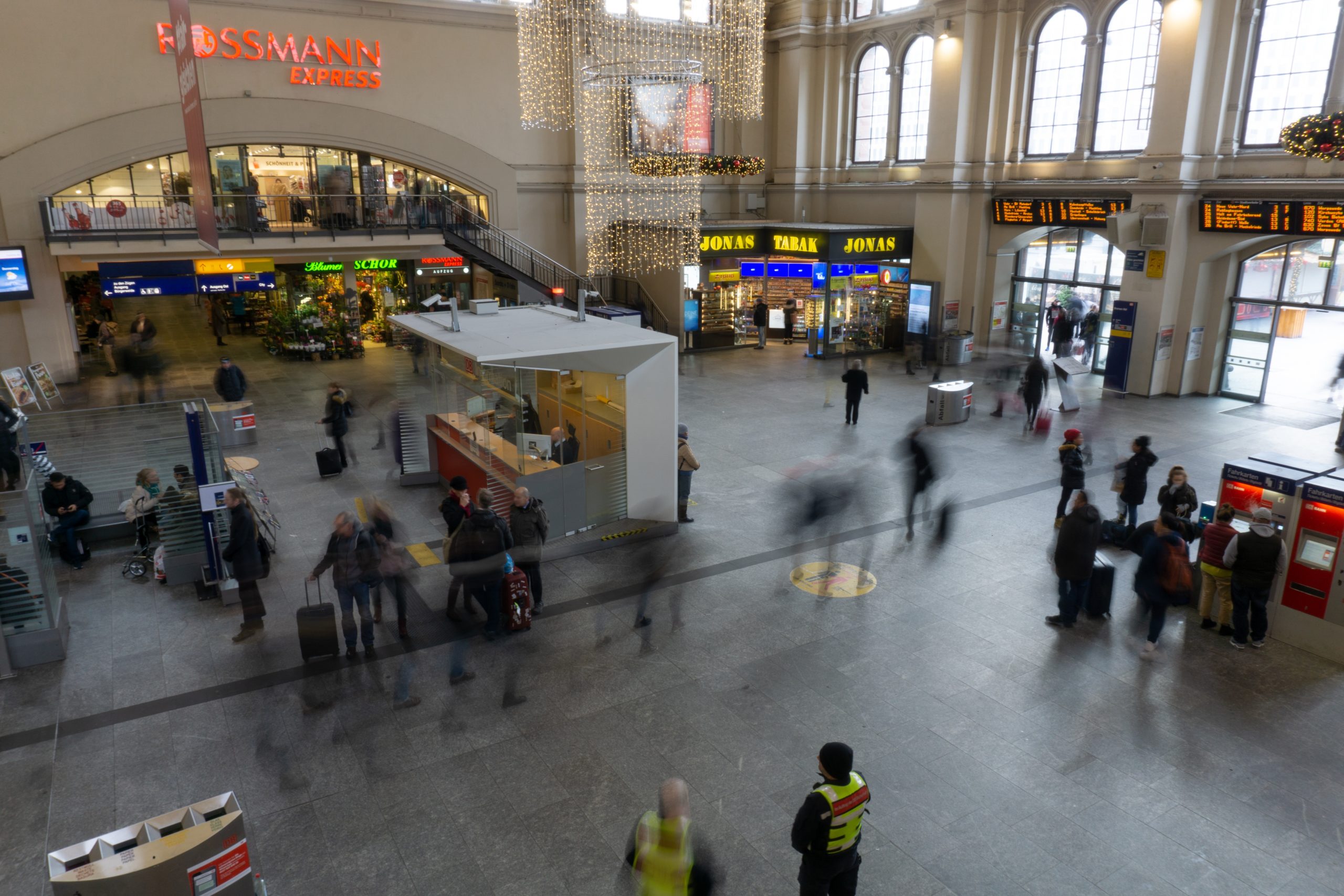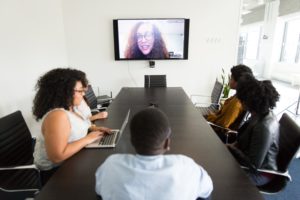- Why is professional travel important?
- What effect has COVID-19 had on professional travel?
- Why is this a key issue for the aid sector?
- Why is this a key issue for the aid sector?
- Some key principles to consider
- Is it easy to implement?
- What is the scope of action?
- What’s next?
- Key facts
- Key facts
- To meditate
- Key solutions
- Key tools
- To go further
- Tools and best practices
- Sources
Why is professional travel important?
Transport has the highest reliance on fossil fuels of any sector and accounted for 37% of CO2 emissions from end‐use sectors in 2021(1). Almost 40% of particulate matter (PM2.5) comes from transport (2). Business and professional travel account for 15% of travel globally(3)(4). The share of international travel by air has increased from 46% in 2000 to 58% in 2018, while international land transport has decreased from 49% to 39% in the same period (train travel representing 2% in 2018).
What effect has COVID-19 had on professional travel?
As a consequence of global lockdown and stay-at-home measures, mobility and its associated emissions declined by an unprecedented amount in early 2020. Global business travel spending fell by roughly 61% in 2020 over the previous year due to the pandemic. (5) Transport demand is rebounding since 2021, both passenger and cargo. Global aviation passenger numbers are expected to return to 2019 levels in 2023 and demand is projected to grow over the next decades. (6)
Why is this a key issue for the aid sector?
Professional travel is one of the greatest contributors to an organisations’ carbon footprint. This is especially true for the aid sector, which provides assistance worldwide. Meetings, trainings, missions, evacuations, leaves – there are numerous reasons for travelling.
Why is this a key issue for the aid sector?

Some key principles to consider
Reducing and adapting one’s professional’s travel behaviour is a critical step in mitigating the climate footprint of an organisation. However, these changes must not compromise the mission of the aid sector of assisting individuals worldwide. Professional travel solutions must therefore be carefully selected and adapted to the various contexts, geography, accessibility, security or travel reasons.
Is it easy to implement?
Professional travel solutions are relatively easy to implement, without contravening the aid organisations primary objectives. They provide substantial emission reduction, they have an immediate effect, they require minimal intervention, they are easily measurable and they have a high symbolic value. According to a 2021 study, 83 % of travelers worldwide believe that sustainable travel is important (7)
What is the scope of action?
In addition to reducing the number of trips, several other types of solutions exist: fuel efficiency, alternative fuels, alternative modes of transport.
What’s next?
Key facts

To meditate
-
The rebound effect
Sobriety and alternative sources of energy are the primary and main levers to significantly reduce carbon emissions globally.
When improvements in energy efficiency contribute to the reduction of energy consumption, this leads to reduction of usage cost, and therefore to more consumption. For example, more efficient engines that use less kerosene can lead to a reduction in the price of air travel, which in turn can lead to an increase in passenger demand and therefore in the number of flights worldwide, thus emissions. (11)
Key solutions
-
#1 Online meetings
Prioritise travel-free meetings and use tele/video conferencing as much as possible for remote meetings.
-
#2 Airline choice
Favour the most eco-responsible ones, such as the most fuel efficient ones or the ones using sustainable alternative fuels. -
#3 Train on short hauls
Prioritise ground travel, train especially, for all short-haul trips. -
#4 No stop-overs
Take direct, non-stop flights to avoid detour emissions and high emissions during takeoff and landing. -
#5 Economy class tickets only
Flying business or first class produces much more GHG emissions per passenger. -
#6 Combined business / leisure trips
Allow staff to extend a business trip with a personal stay to reduce all professional and personal emissions of staff. -
#7 Loyalty programs
Donate all benefits received through loyalty programs through loyalty programs to climate friendly projects -
#8 Less carbon-intensive vehicles
Buy, rent and use lighter, fuel efficient, bioethanol or electric cars. -
#9 Flightless employee benefit package
Alternatives exist to offer employees contractual benefits that are significantly less carbon intensive, more consistent with the social mission of organisations, and still attractive to employees.
-
#10 Air travel reduction
The best way to drastically reduce travel-related CO2 emissions is to minimise the number of kilometres flown.
-
#11 Travel policy
By introducing strict climate criteria, organisations provide clear rules for responsible and sustainable travel behaviour, notably to reduce air travel.
-
#12 Lowest emission flights
When flying is absolutely necessary, choosing the least carbon intensive flight option allows to minimise the impact of flying
Key tools
An ambitious travel policy is one of the cornerstones of an effective climate strategy at an organisation’s level. It sets the rules and provides a clear and common framework for all staff. It allows for bold climate actions and best individual practices to be generalised across the entire organisation, thus scaling up the impact.
Specific tools can be developed or adjusted to support the implementation of the policy, such as a travel decision & booking tool.
Innovative financial means can be introduced to support a balanced budget, such as an internal carbon taxthat can be reinvested in green practices.
Behavioural incentives are essential. Awareness raising posters are useful tools to inform and engage the staff.
To go further
Tools and best practices
-
ETH Zurich has develop a travel decision tool. It allows travel options to be sorted according to time, cost or CO₂ emissions
Read here -
ETH Zurich proposes a flight decision tree when travelling is needed
Read here -
Atmosfair airline ranking index, 2018
Read here -
University of Gent
Travel policy
Read here -
Centre for Sustainability Studies – Lund University
Travel policy
Read here -
Bank of England
Travel policy
Read here -
Greenpeace Belgium
Travel policy
Read here
Online meetings & trainings

Train travel

Direct flights

Economy class tickets only

Flightless employee benefits package

Air travel reduction

Travel policy

Lowest emission flights

Sources
(1)Improving the sustainability of passenger and freight transport, IEA, 2023. Read here.
(2) Air pollution sources, European Environment Agency, 2021. Read here.
(3) International Tourism Highlights, World Tourism Organisation, 2019. Read here.
(4) Expenditure of business tourists worldwide from 2001 to 2021, Statista. Read here.
(5) Expenditure of business tourists worldwide from 2001 to 2021, Statista. Read here.
(6) Tracking Transport, IEA, 2020. Read here.
(7) Share of travelers that believe sustainable travel is important worldwide in 2022. Statista. Read here.
(8) UCL news, Arctic sea ice loss linked to personal CO2 emissions. Read here.
(9) Stay Grounded, What is the climate impact of aviation? Read here.
(10) World Bank, 2013. Calculating the Carbon Footprint from Different Classes of Air Travel. Read here.
(11) The rebound effect in the aviation sector, Antony Evans, 2012. Read here.
Cover photo © Ratish Gandhu/Unsplash.
Lowest emission flights

Travel policy

Air travel reduction

Train travel

Direct flights

